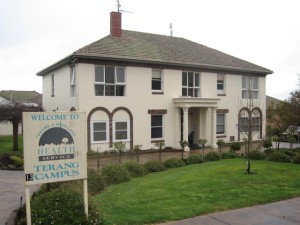April 2011
Small rural emergency departments are important. They are a significant fraction of a state’s emergency medical system. Although they each see only a few thousand patients a year, as a group they are likely to treat more emergency patients than the largest city hospital. It is a myth that they only deal with minor ailments. Many isolated rural hospitals receive ambulances because ambulance services are reluctant to send their only local ambulance out of area. In addition, many patients with serious illness come directly to the emergency department without calling an ambulance.
There is little ongoing research into how these departments operate, and how their performance can be improved. Here we offer three ways to improve emergency care for communities around small rural hospitals.
Provide a simple access point for rural families, and advertise it.
We have found that country people are uncertain how to access help in a medical emergency. When we asked farming families to nominate their nearest emergency department, 10 % incorrectly nominated towns with no emergency department at all. Only some of these towns had a medical centre. Many studies have demonstrated rural families’ reluctance to call ambulance services. It is easy to imagine a scenario where people drive through the night to find the only available emergency care was in the other direction.
Improve co-operation between rural hospitals and ambulance services. Work out the number of critical care procedures required each year, and use simulation to keep a small number of clinicians competent to perform them.
It is hard for a small town to recruit enough doctors with critical care skills. It is just as hard to recruit paramedics with those skills. And there are not enough emergencies in most towns to keep a full complement of doctors, remote area nurses and paramedics from becoming rusty. Unfortunately, there are often too many to ignore. And unfortunately, a helicopter service is not always available either. Many small towns have a hospital and an ambulance base, but their rosters are not co-ordinated. One day there will be an intensive care paramedic and General practitioner Anaesthetist in town. Later in the week there will be nobody with critical care skills. An integrated system will also provide certainty for rural general practitioners who are concerned that they may have no role in rural emergency care in the future.
Add a key performance indicator for regional emergency departments that gives a minimum percentage of transfers from their surrounding small hospitals that must be accepted.
Every emergency department has an Admitting Officer to receive calls from surrounding health services. Most are helpful, but to meet the performance targets of their own department, they often become Deflecting Officers who refuse patients when they are busy. There is little downside to this for large hospitals, but a doctor at a small hospital can waste many hours looking for someone to accept his or her patient.
These three tasks – advertising a single access point, co-ordinating critical care cover, and auditing the responsiveness of regional services – will require different approaches in different jurisdictions. They will also require research, so that the solutions can be well targeted and evidence based. The Centre for Rural Emergency Medicine is committed to assisting in this process.

